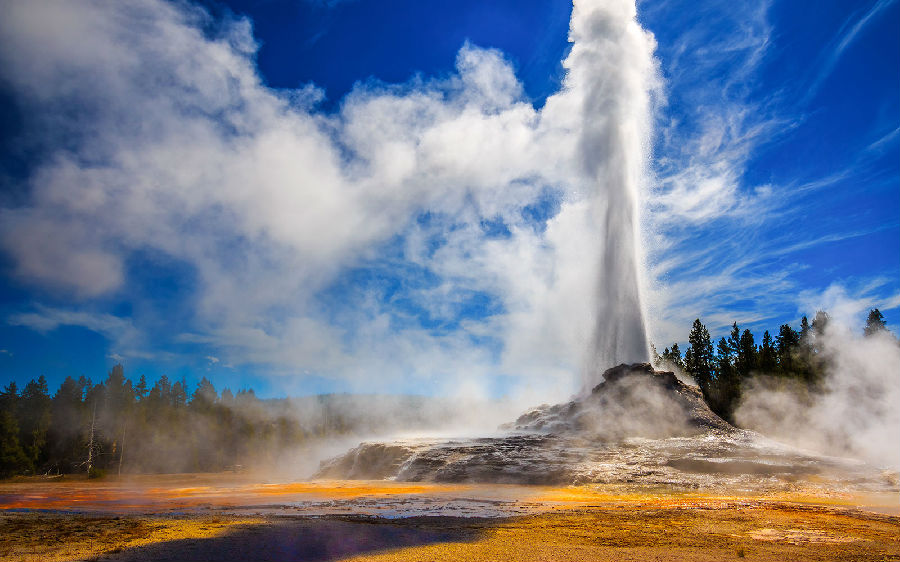Once it is in place, the idea is that three people—Christiansen in Menlo Park, California, Professor Robert B. Smith at the University of Utah, and Doss in the park—would assess the degree of danger of any potential cataclysm and advise the park superintendent. The superintendent would take the decision whether to evacuate the park. As for surrounding areas, there are no plans. If Yellowstone were going to blow in a really big way, you would be on your own once you left the park gates.
计划问世以后,打算这么做:3个人——加利福尼亚门洛公园的克里斯琴森、犹他大学的罗伯特·B·史密斯和公园的多斯——将评估潜在大灾难的危险程度,然后向公园主管提出建议。主管将作出是否应当撤离公园的决定。至于周围地区,他们没有计划。一旦出了公园大门,你不得不自己救自己——要是黄石火山真的大爆发的话,这个计划解决不了什么大问题。

Of course it may be tens of thousands of years before that day comes. Doss thinks such a day may not come at all. "Just because there was a pattern in the past doesn't mean that it still holds true," he says. "There is some evidence to suggest that the pattern may be a series of catastrophic explosions, then a long period of quiet. We may be in that now. The evidence now is that most of the magma chamber is cooling and crystallizing. It is releasing its volatiles; you need to trap volatiles for an explosive eruption."
当然,也许要过几千几万年以后那一天才会到来。多斯认为这样的一天根本不会到来。“这是因为,过去有个模式,并不意味着那个模式依然适用于今天,”他说,“有迹象表明,那个模式也许是一系列灾难性的喷发,接着是漫长的平静时期。我们现在也许就处在这个平静时期。目前的迹象表明,大部分岩浆房正在冷却,变成晶体。它在释放火气,你得把火气憋在心里才能来一次大爆发。”
In the meantime there are plenty of other dangers in and around Yellowstone, as was made devastatingly evident on the night of August 17, 1959, at a place called Hebgen Lake just outside the park. At twenty minutes to midnight on that date, Hebgen Lake suffered a catastrophic quake. It was magnitude 7.5, not vast as earthquakes go, but so abrupt and wrenching that it collapsed an entire mountainside. It was the height of the summer season, though fortunately not so many people went to Yellowstone in those days as now.
与此同时,黄石公园及其周围地区还存在许多别的危险。这一点在1959年8月17日夜里变得特别明显。事情发生在赫布根湖地区,就在公园外面。那天午夜零点前20分钟,赫布根湖遭受了一次灾难性的地震。震级为7.5级。就地震而言,它的影响面不大,但是来得突然,来得猛烈,震塌了整个山坡。事情发生在夏季旅游旺季。幸亏,那个年代不像现在那样有许多人前往黄石公园。













